June 29, 2024–Siracusa (Syracuse), Sicily
- mlchad147
- Jun 29, 2024
- 5 min read
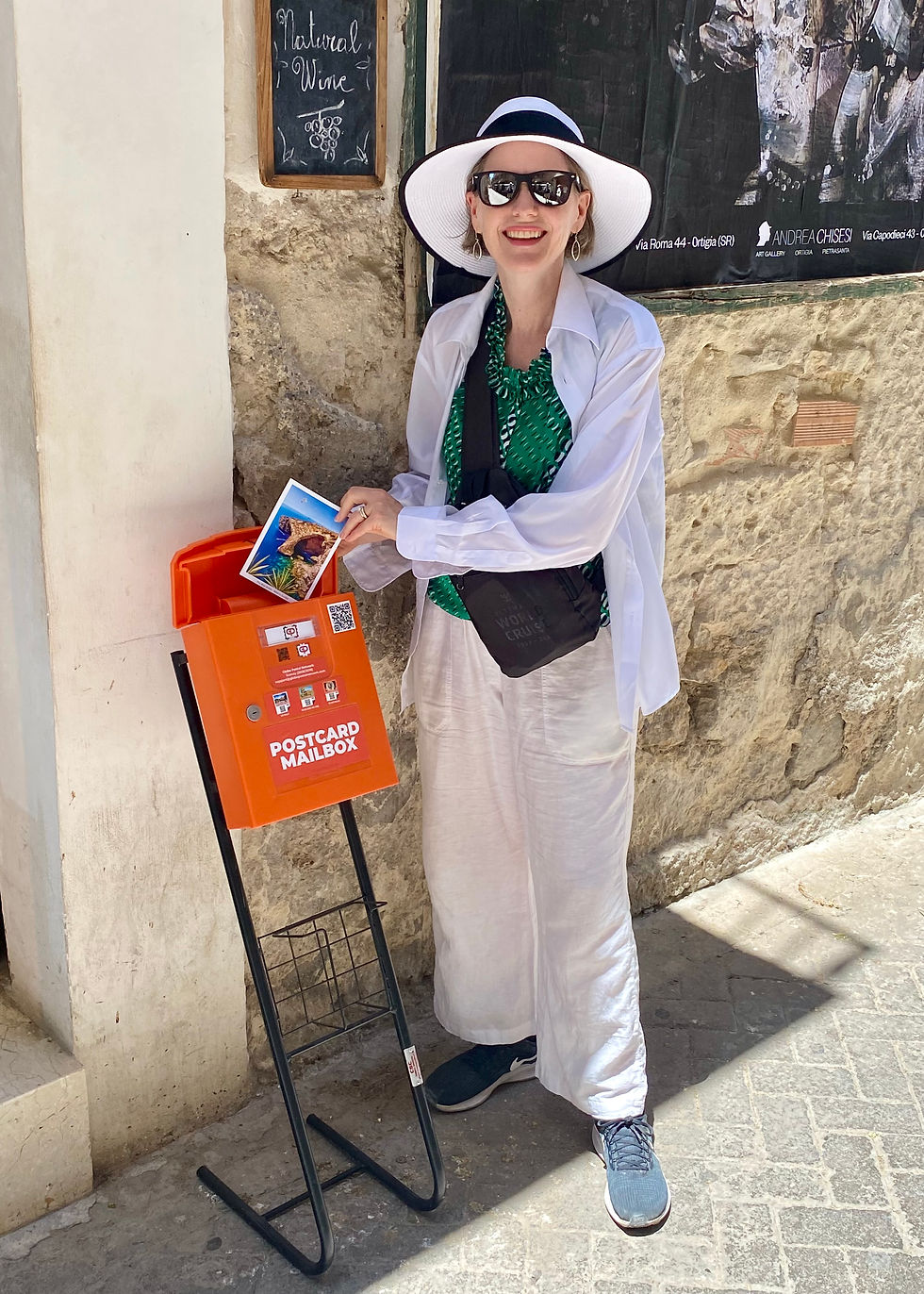
Greetings from Sicily, where you can buy a Godfather mug with a handle shaped like a pistol in tourist gift shops. Today we were in Siracusa (Syracuse in English), on the island’s southeast coast, though our original itinerary called for us to be in Taormina instead. However, Taormina lies in the shadow of Mt. Etna, and the volcano’s misbehavior several months ago impacted that city and caused Royal Caribbean’s powers that be to redirect us to a safer location out of an abundance of caution.
Siracusa isn’t a bad Plan B though. It’s a nice city of 120,000 people with plenty to see and do, and I think we had a nice day here. It’s a tender port, meaning that the ship anchored out in the harbor and our lifeboats shuttled us to the pier and back. Another hot, sunny day with calm seas meant that the tendering went smoothly, and I enjoyed the short ride to the pier, where we met our guide for the day.
Although part of our scheduled tour was within walking distance, our first destination was outside the city, so we boarded a bus for the short ride to Parco Archeologico della Neapolis, site of some interesting Greek and Roman ruins. The Parco (park, and I’ll use English translations going forward) is divided into three main sections—the Paradise Quarry, the Greek theater, and the Roman amphitheater. To me the ancient Greek quarry was the most interesting, though the Greek amphitheater was certainly impressive.
The quarry was in use for a long time during the Greek and Roman periods, and a lot of limestone blocks were chiseled and cut out. Slaves and prisoners of war were imprisoned here and did a good bit of the quarrying. One of the caves had the added benefit that the acoustics were such that the guards could hear everything the prisoners said. Many years later the quarry was a source of saltpeter, a necessary ingredient in the manufacture of gunpowder.
The Greek theater was the third largest of its time, and was unique in that most of it was built into the side of a hill rather than fully above ground level. Why the Romans subsequently built their own amphitheater nearby instead of just using the perfectly fine Greek theater wasn’t made clear to us, and I didn’t think to ask our guide while we were there. Something to research, I guess.
Unfortunately for posterity, many years after the Greeks and Romans were ousted, the Spanish, who ran the place for a while, committed a scandalous archeological crime when they destroyed much of the site so they could use the limestone blocks to build fortifications. Fortunately, the Greek theater was in good enough shape that it could be restored to the degree that it is used for performances three or four times a year.
Our thorough exploration of the old ruins completed, we hopped back onto the bus, which took us pretty much back to where we started the day on the pier. But rather than returning to the ship, we set off on foot for a walking tour of the old city. The old city is located on the island of Ortigia, and was easily reached by a short walk over the Santa Lucia Bridge. The island isn’t large, and an hour was sufficient for our guide to show us the highlights, including the city hall, the Palazzo Beneventano del Bosco (a palace), the Siracusa Cathedral, and the Church of Santa Lucia alla Badia, which is a Catholic Basilica. I should mention that Santa Lucia (Saint Lucy) is the patron saint of Siracusa.
After that our guide turned us loose in the city, and we spent some time walking down the narrow streets (sound familiar?), window shopping and looking for a mailbox to mail a postcard home. Satisfied that we had checked those boxes, we made our way back across the bridge and in short order were on a tender back to the ship.
It occurred to me that I’ve said little lately about our onboard activities, so here’s how we spent the later part of the afternoon. It turns out that we’ve made good friends with a couple from Mechanicsburg, just across the river from Harrisburg and no more than half an hour’s drive from our home in Hershey. This afternoon the four of us sat out on the starboard deck and played canasta while we watched the ship sail away from Siracusa. Not bad. Later we watched as the ship sailed past the giant that is Mount Etna, and at 8:00 I’m sure we’ll all be out on deck to watch us slip through the narrow Strait of Messina, which is the passage between Sicily and the Italian mainland. And around 11:00 tonight we’ll sail past one of the world’s most active volcanoes, Stromboli, which has the potential to be exciting. It was erupting when we sailed past it eleven years ago, and we got to see orange lava spilling down the mountain into the sea. I doubt we’ll be that lucky tonight, but you never know.
That’s it for today. Back tomorrow with a report on our next port of call, Naples. Until then, ciao, ciao, for now.

First look at the Greek quarries.
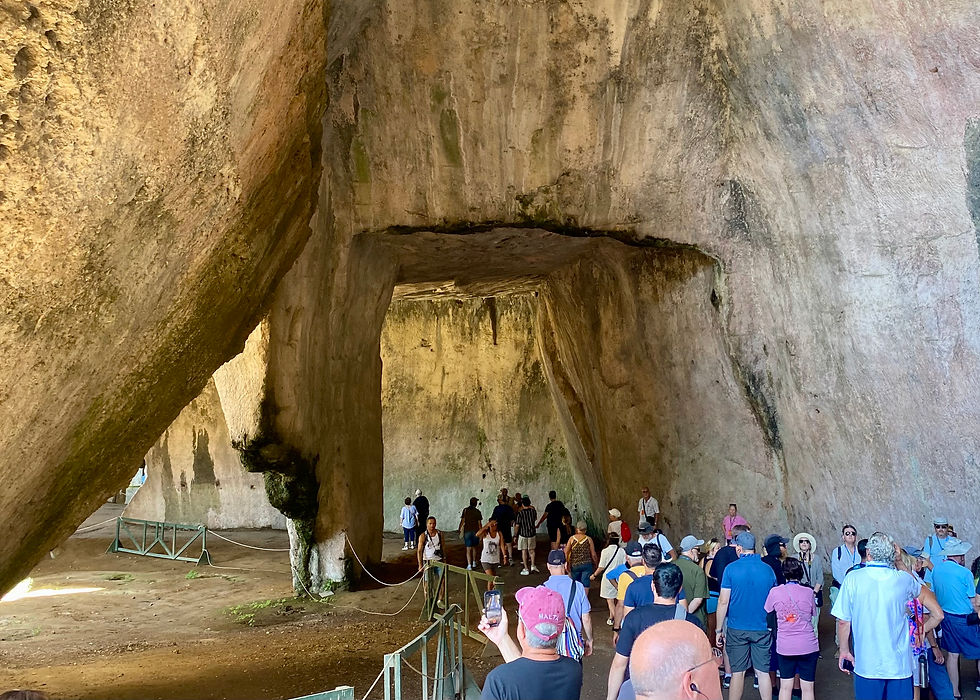
Inside the quarries.
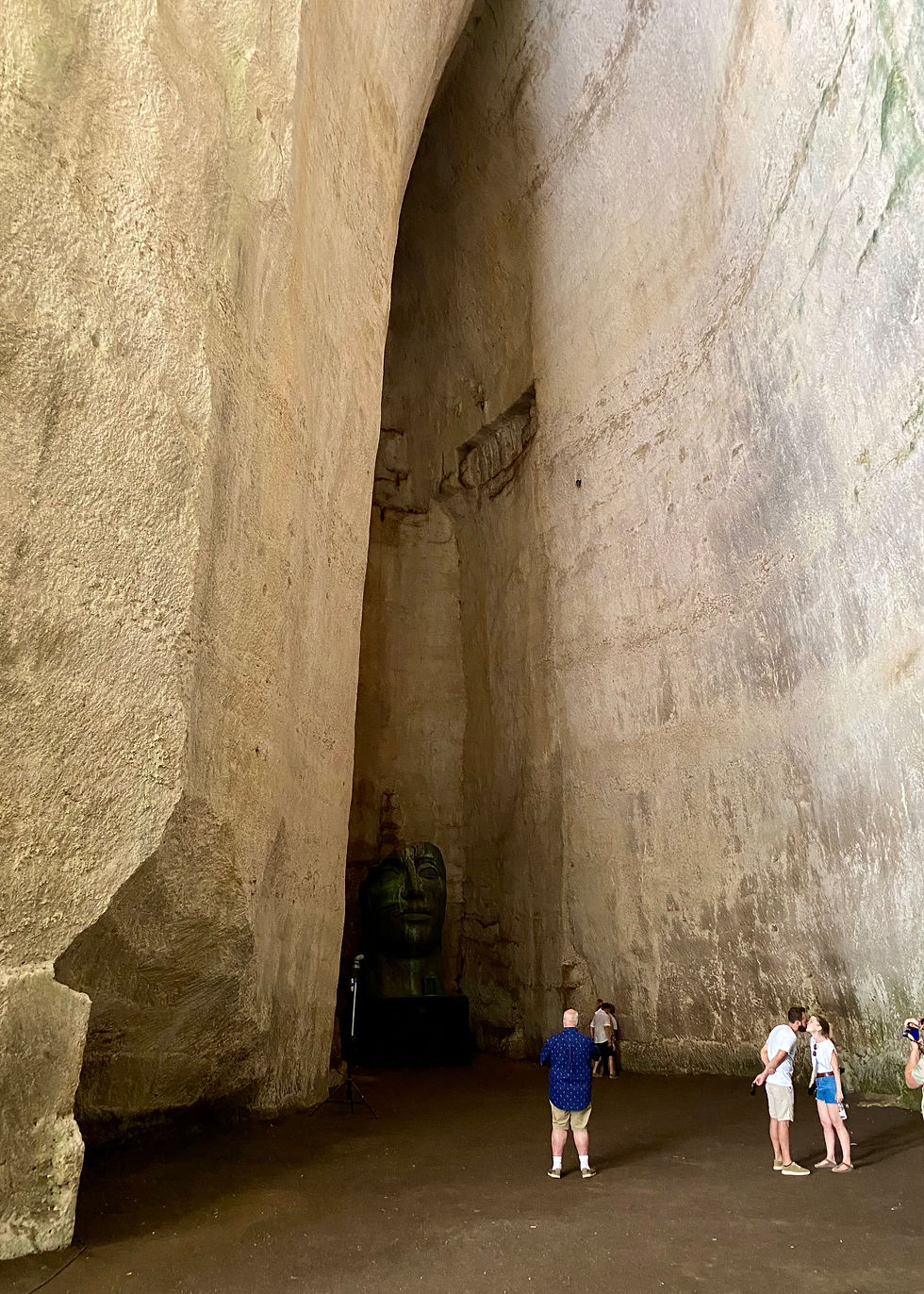
This is the cave with the amazing acoustics. Talking at even normal conversational level becomes magnified and echoes.

Not sure why, but the works of modern sculptors are interspersed throughout the caves and grounds.
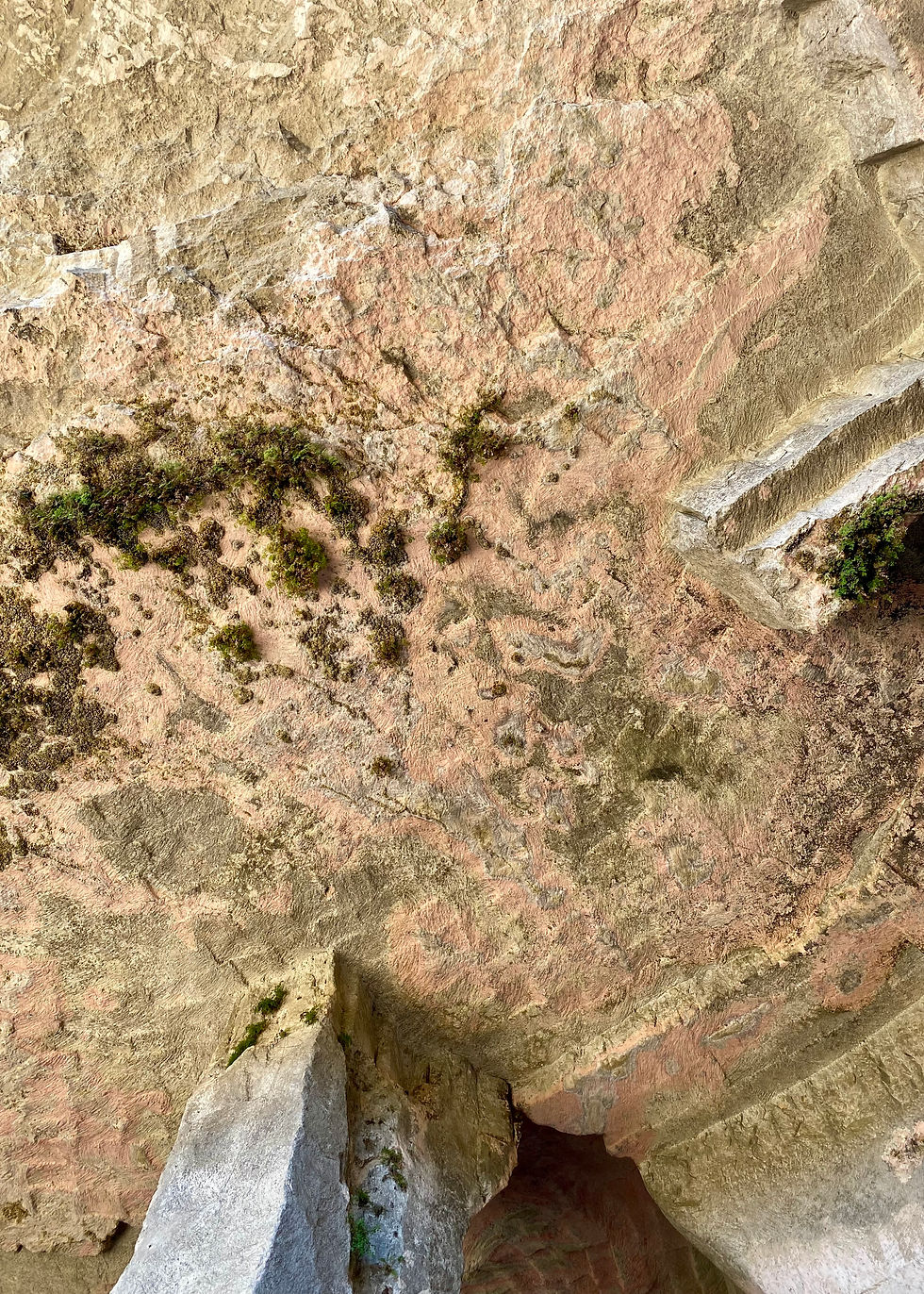
The pink in this photo is saltpeter, one of the necessary components of gunpowder. Many years after the Greeks and Romans were gone the caves were mined again for their saltpeter.
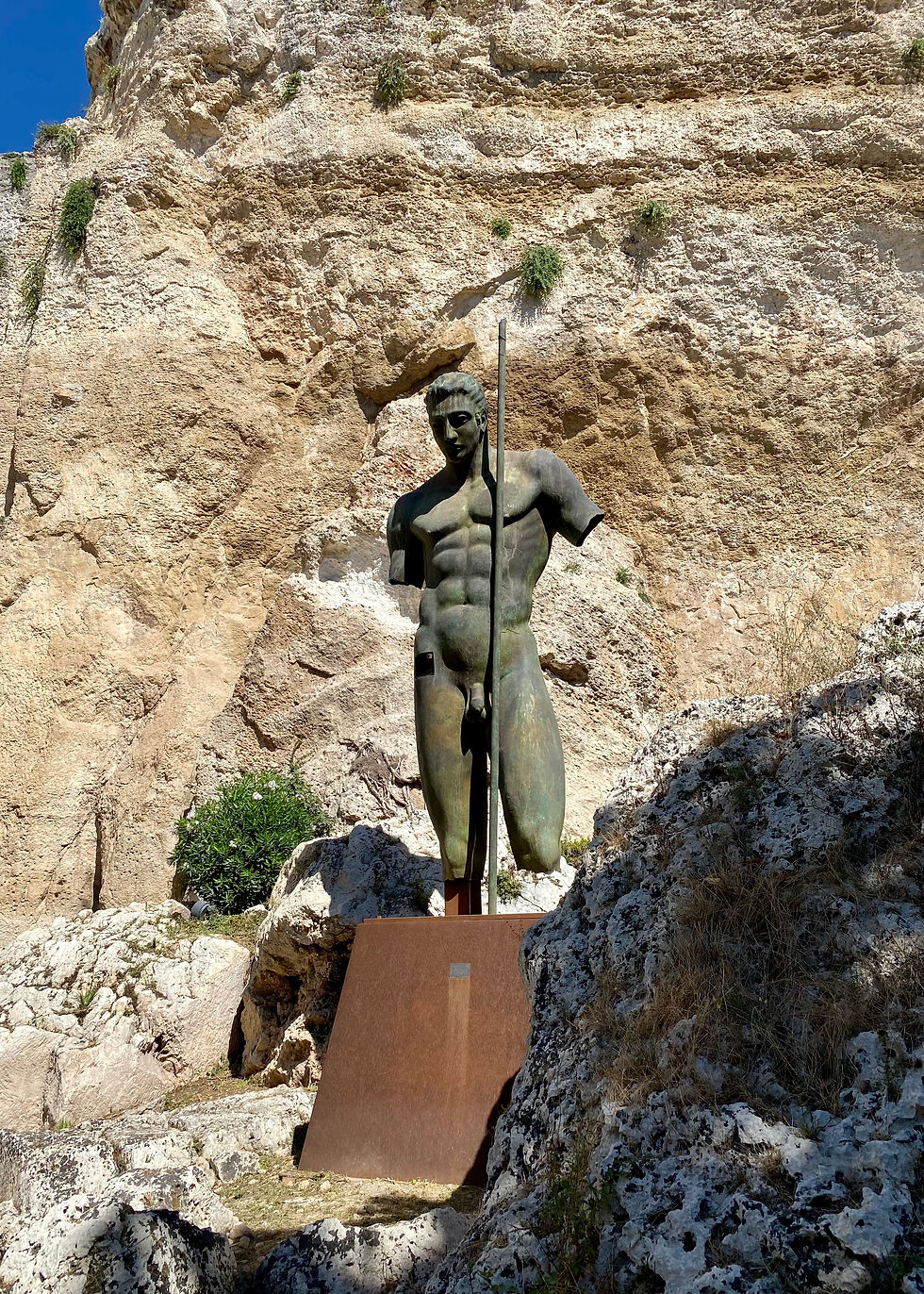
Hide the kids’ eyes. This anatomically correct statue was outside the caves.

Not much left of it after the Spanish got through with it, but this was the Altar of Hiero II.
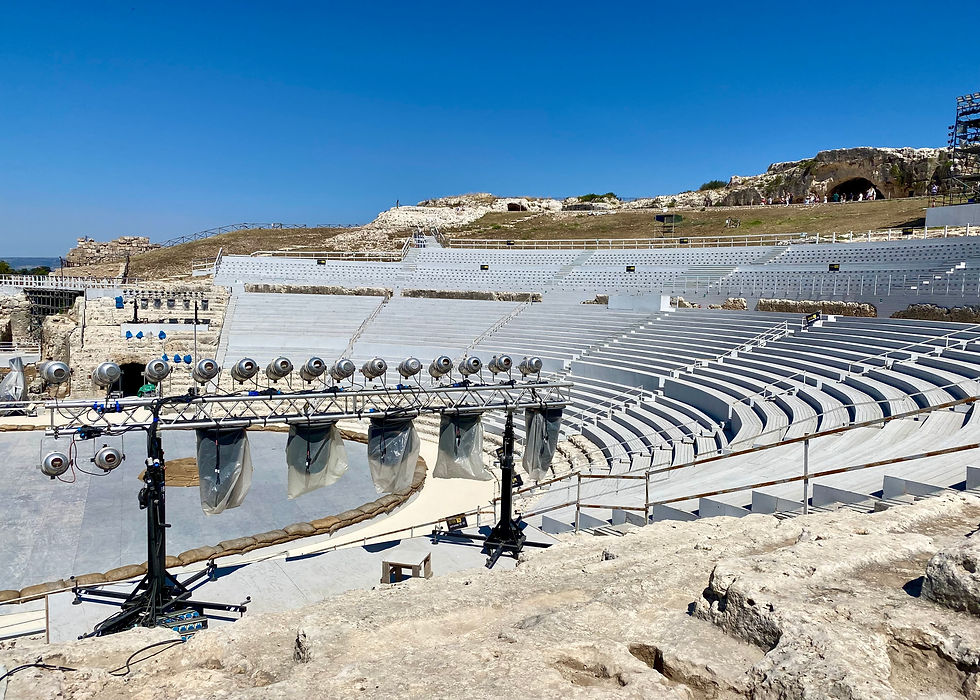
The Greek theater has been rehabilitated enough that it is used three or four times a year for performances.

Not as much is left of the Roman amphitheater.
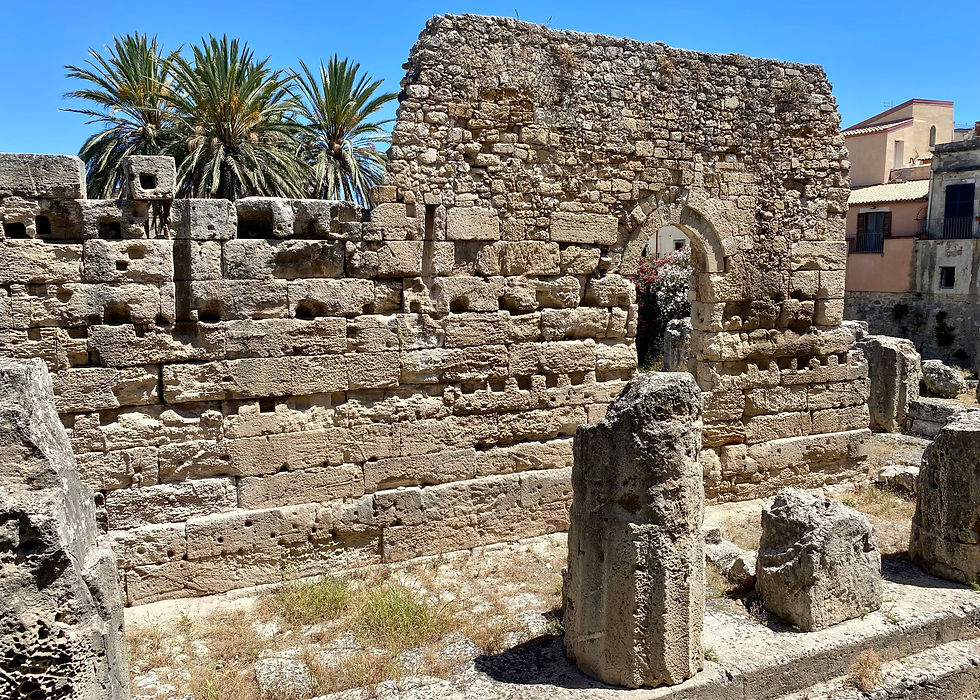
Back in the city of Siracusa. Just across the bridge onto Ortigia Island are the remains of the Temple of Apollo.
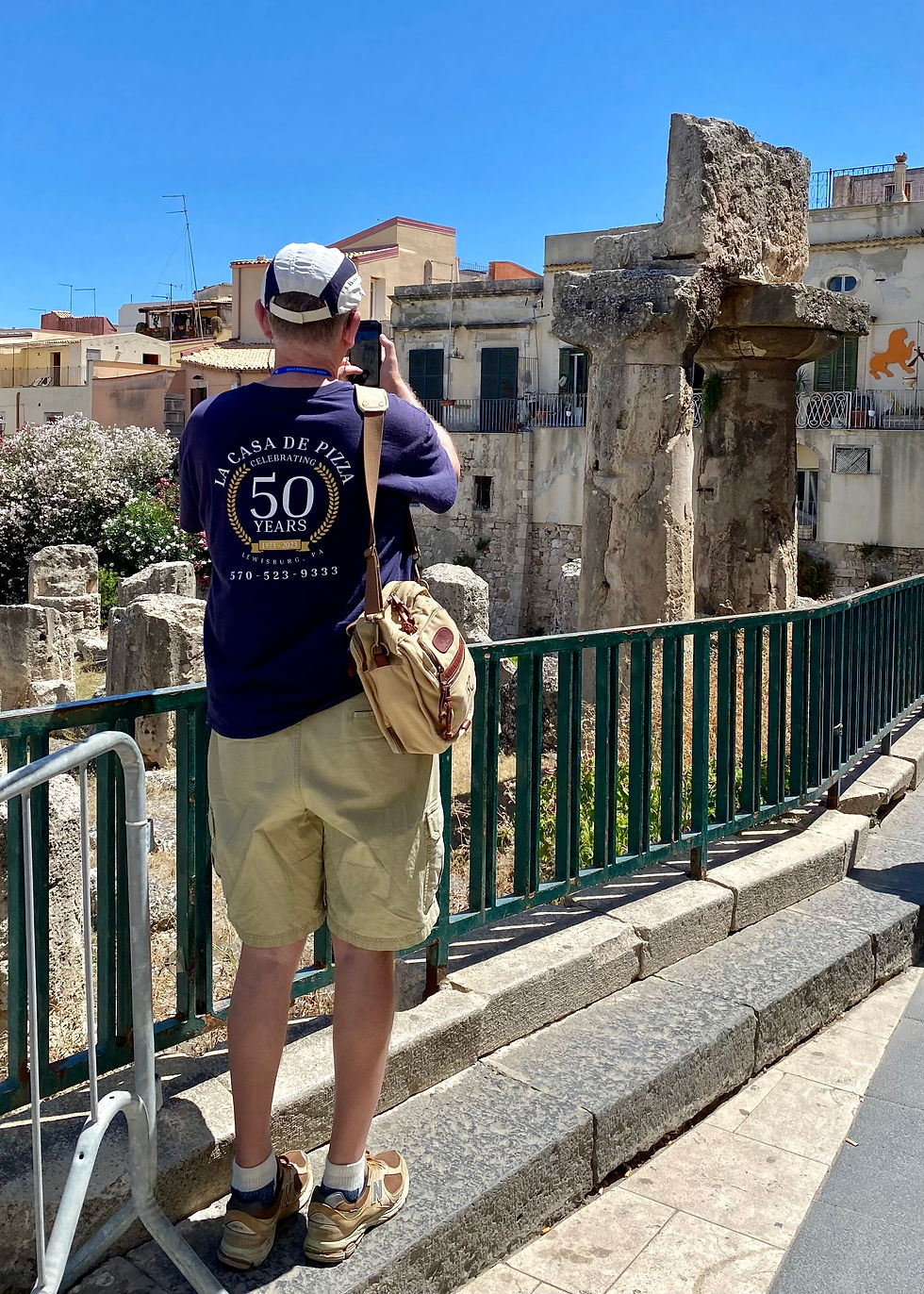
Me photographing the Temple of Apollo.
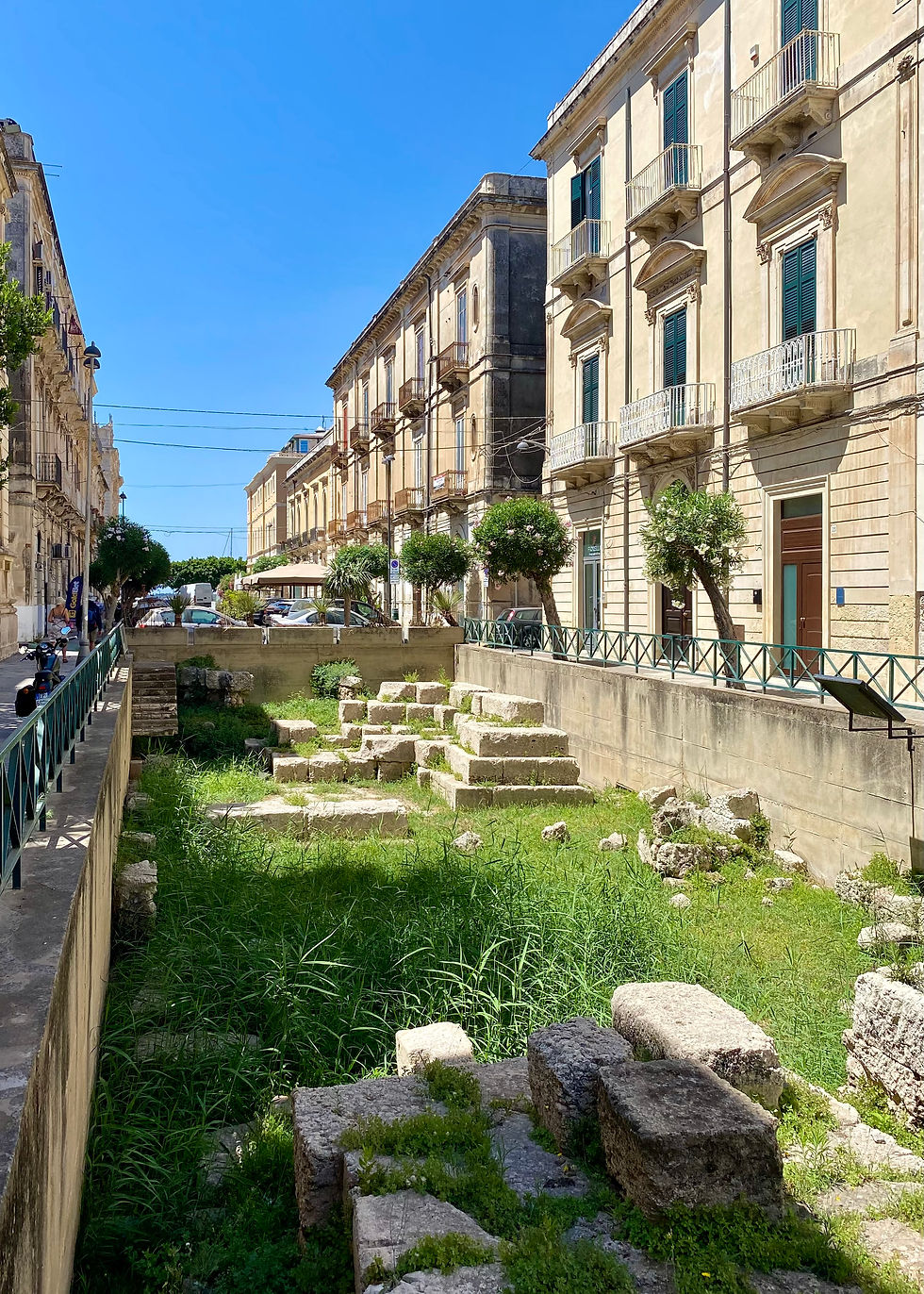
And this is what’s left of Venetian walls. Last ruins photo, I promise.

Like every other old city we’ve visited in the Mediterranean, the charming, narrow streets are packed with tourists.
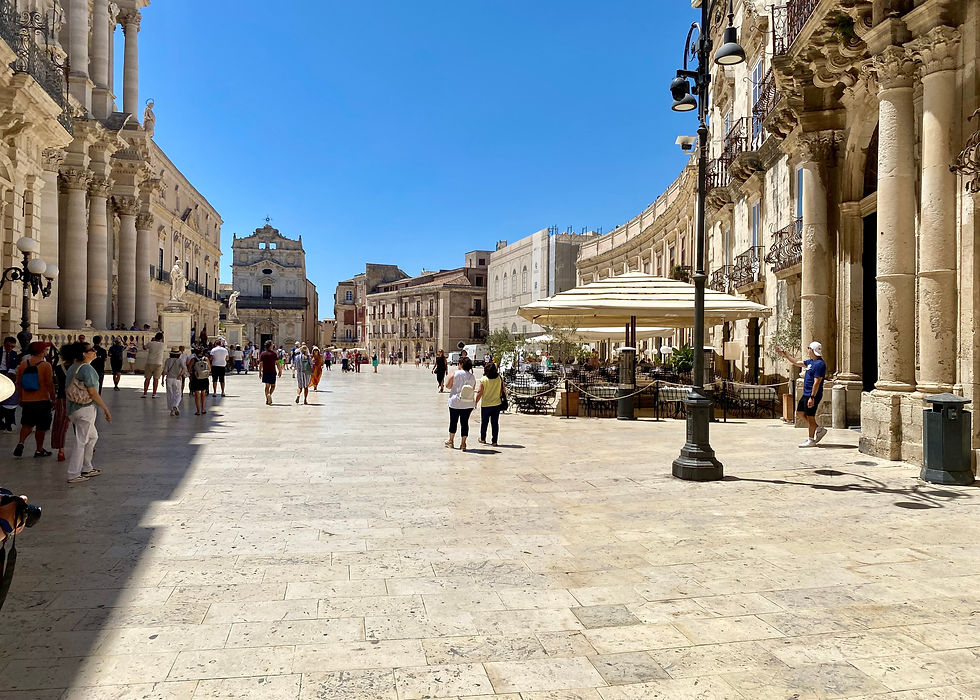
The main piazza (plaza) in old Siracusa. The Siracusa Cathedral is on the left. The Church of Santa Lucia (Saint Lucy), the city’s patron saint, is straight ahead at the end of the piazza.
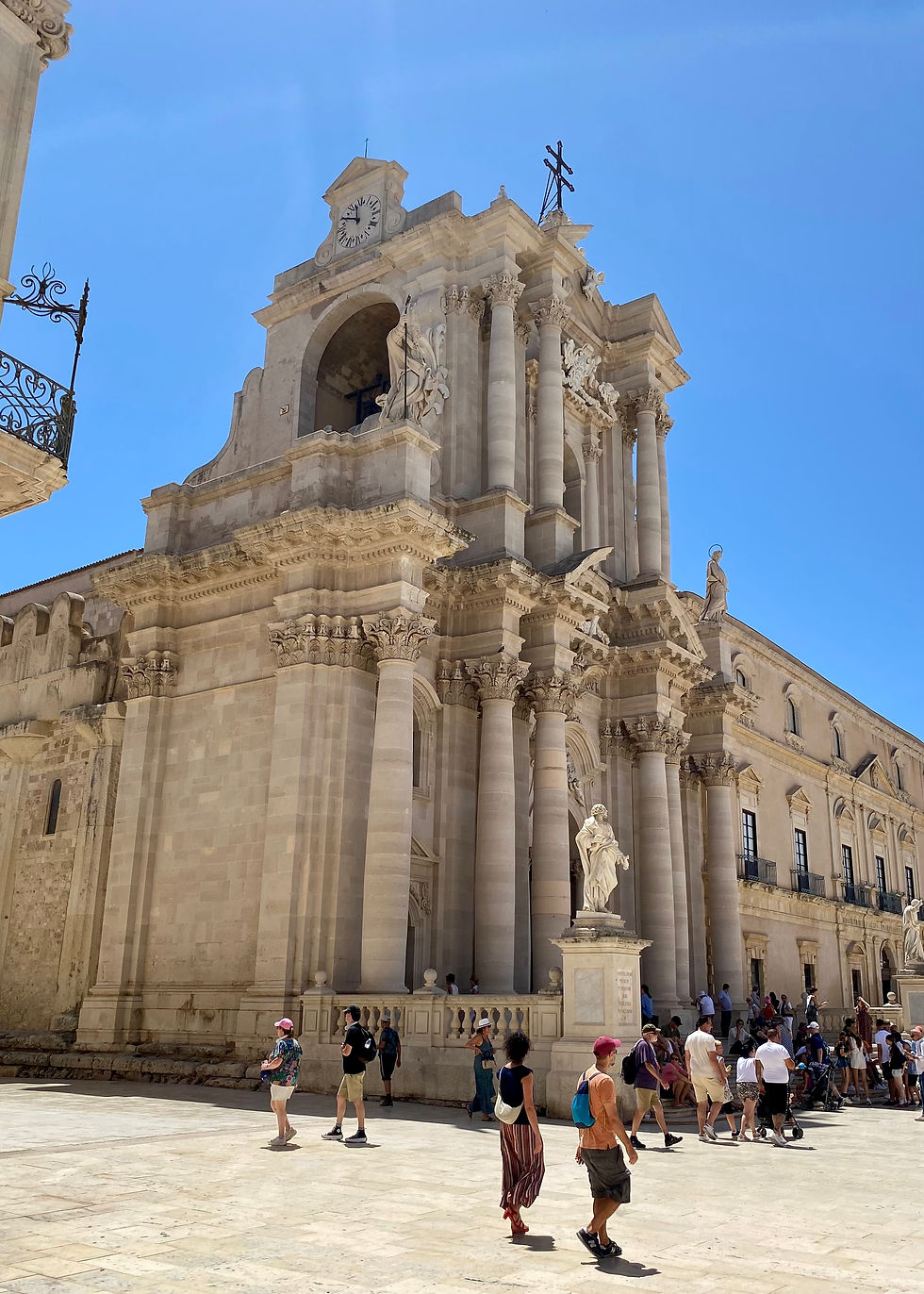
The Siracusa Cathedral.
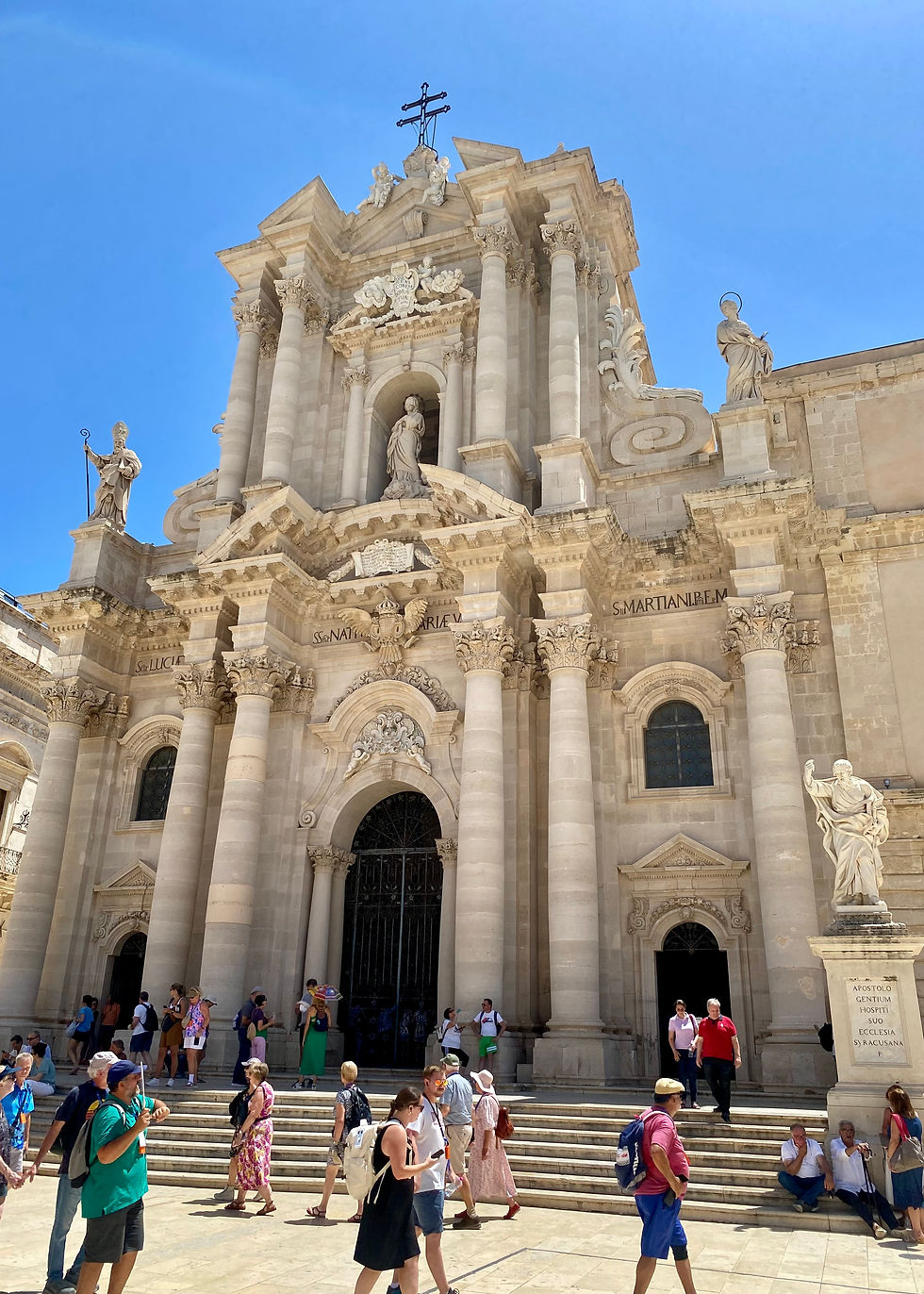
Another view of the Cathedral.
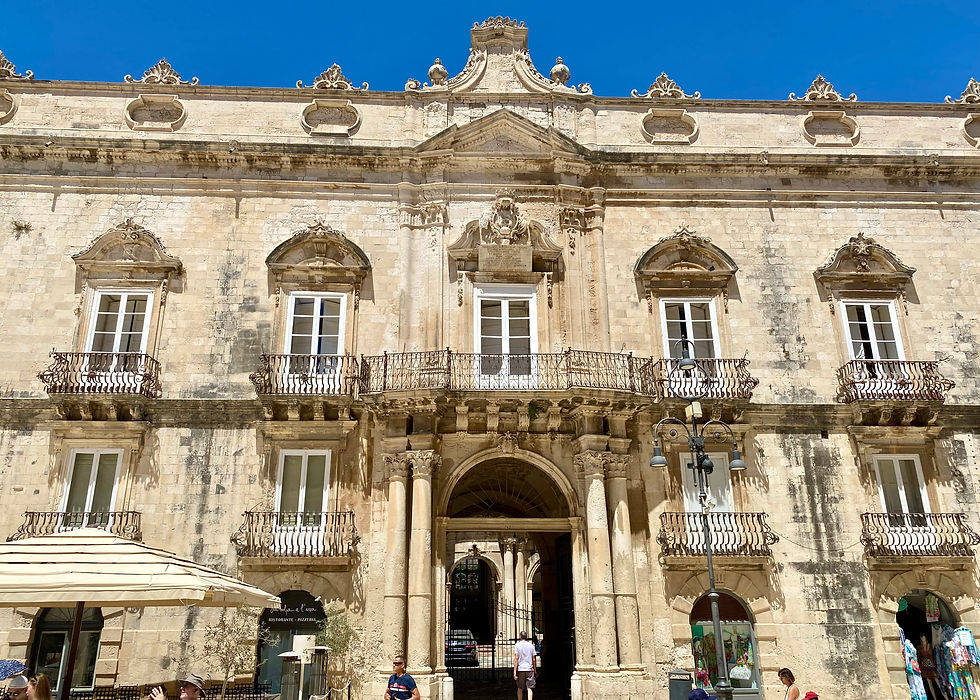
The Palazzo Beneventano del Bosco, a former palace.

The Church of Saint Lucy.

Inside the Church of Saint Lucy.
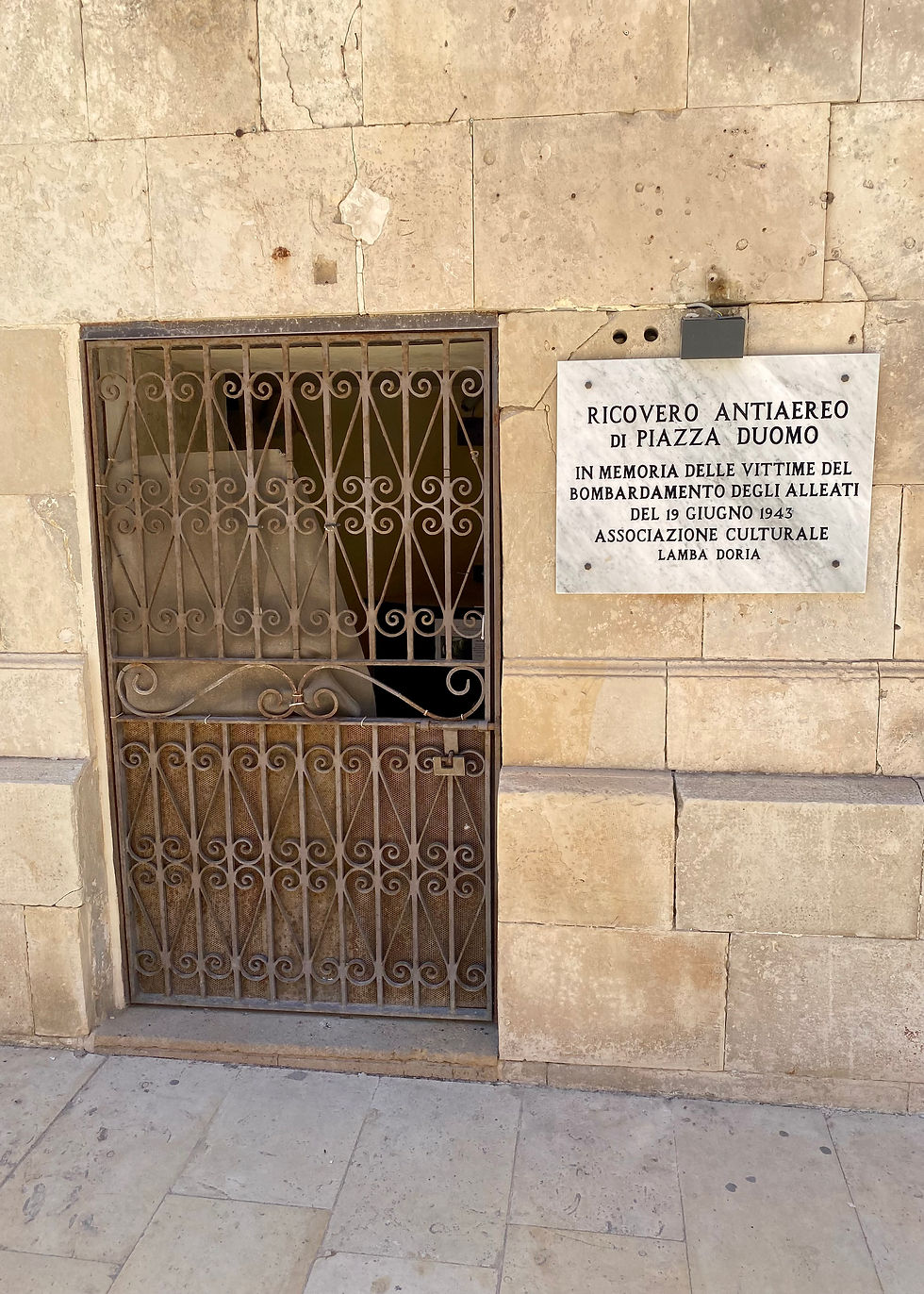
The entrance to a World War II bomb shelter is between the Cathedral and the Church of Saint Lucy.
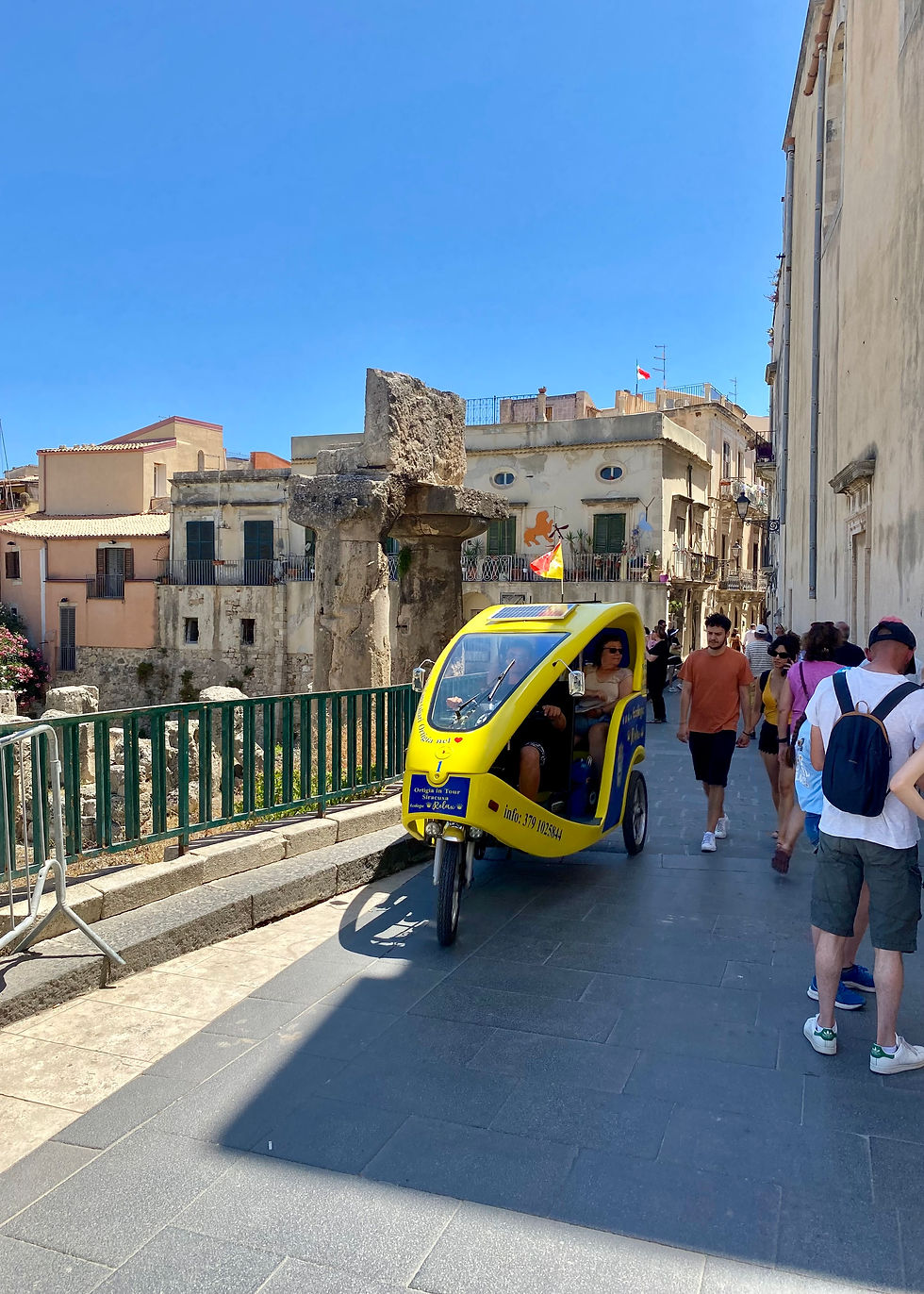
Pedal powered tour vehicle. Temple of Apollo in the background.
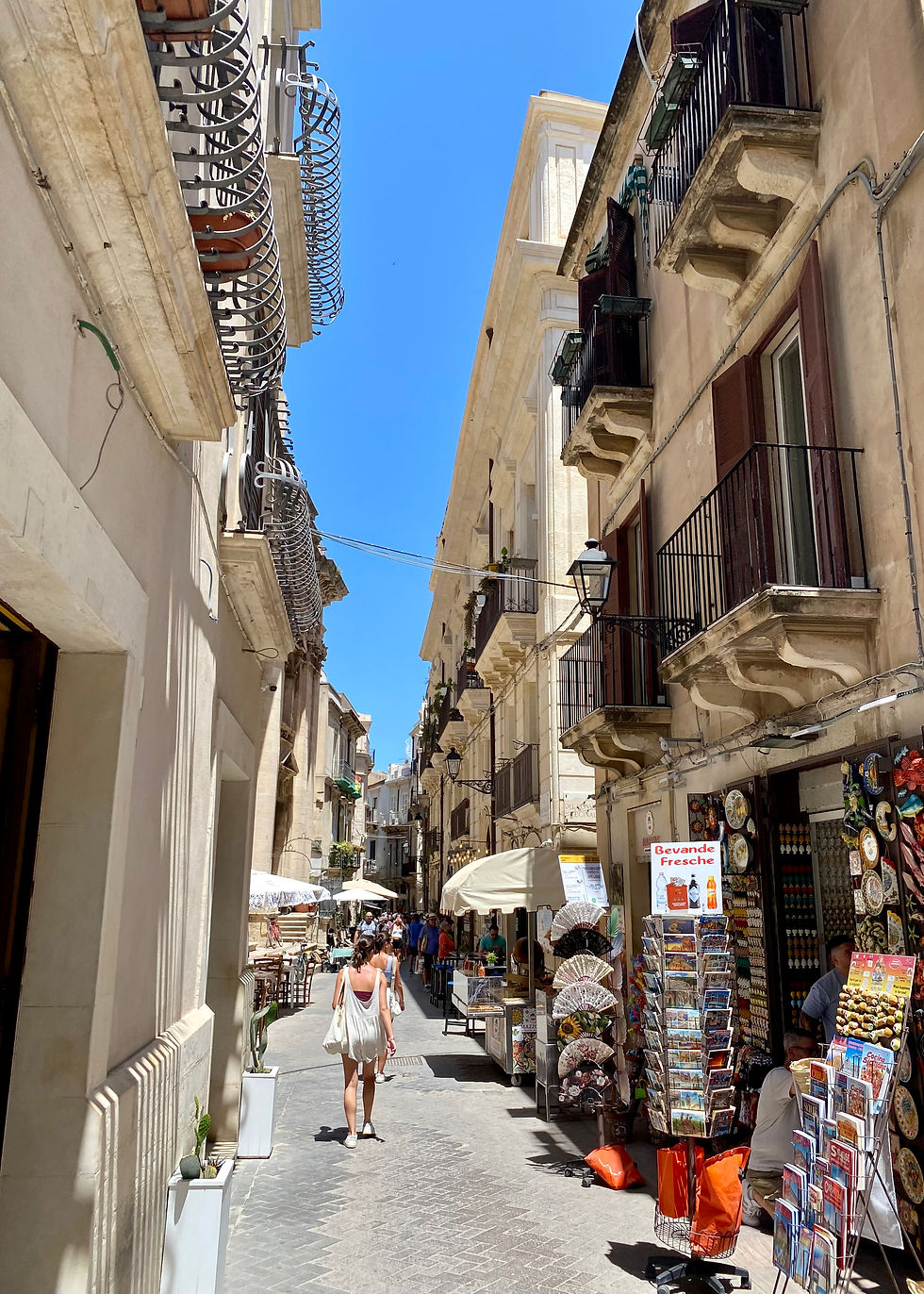
I love the narrow streets of the old European cities.

Here’s a rare one with no one in sight.

This is more like it.

Siracusa waterfront. That’s our ship in the background.

Another shot of the waterfront. That’s not our ship in the background.
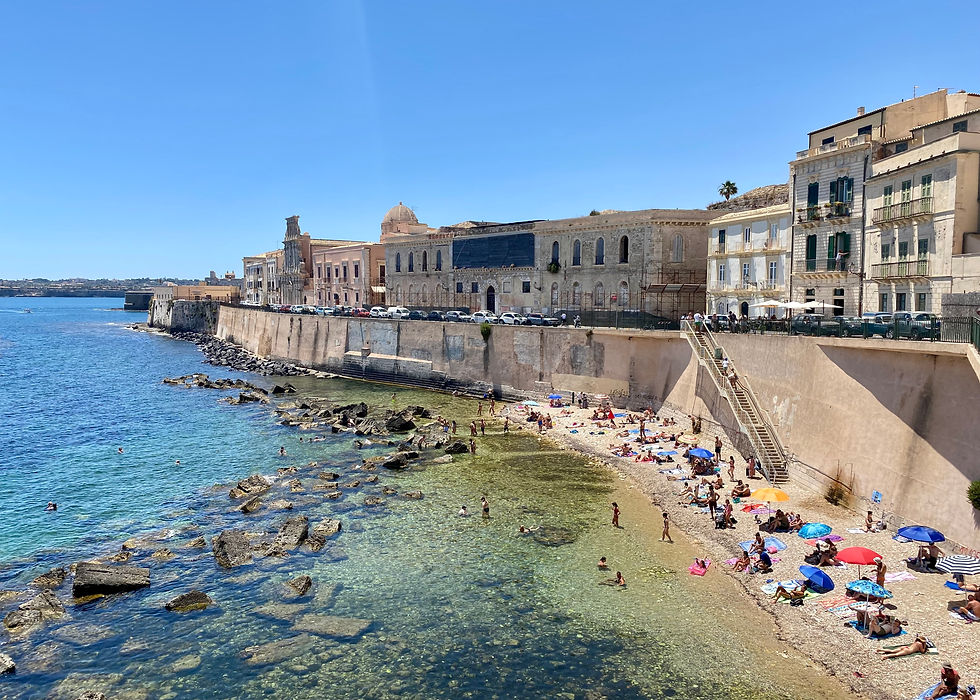
There’s a popular gravel beach right in the old city.
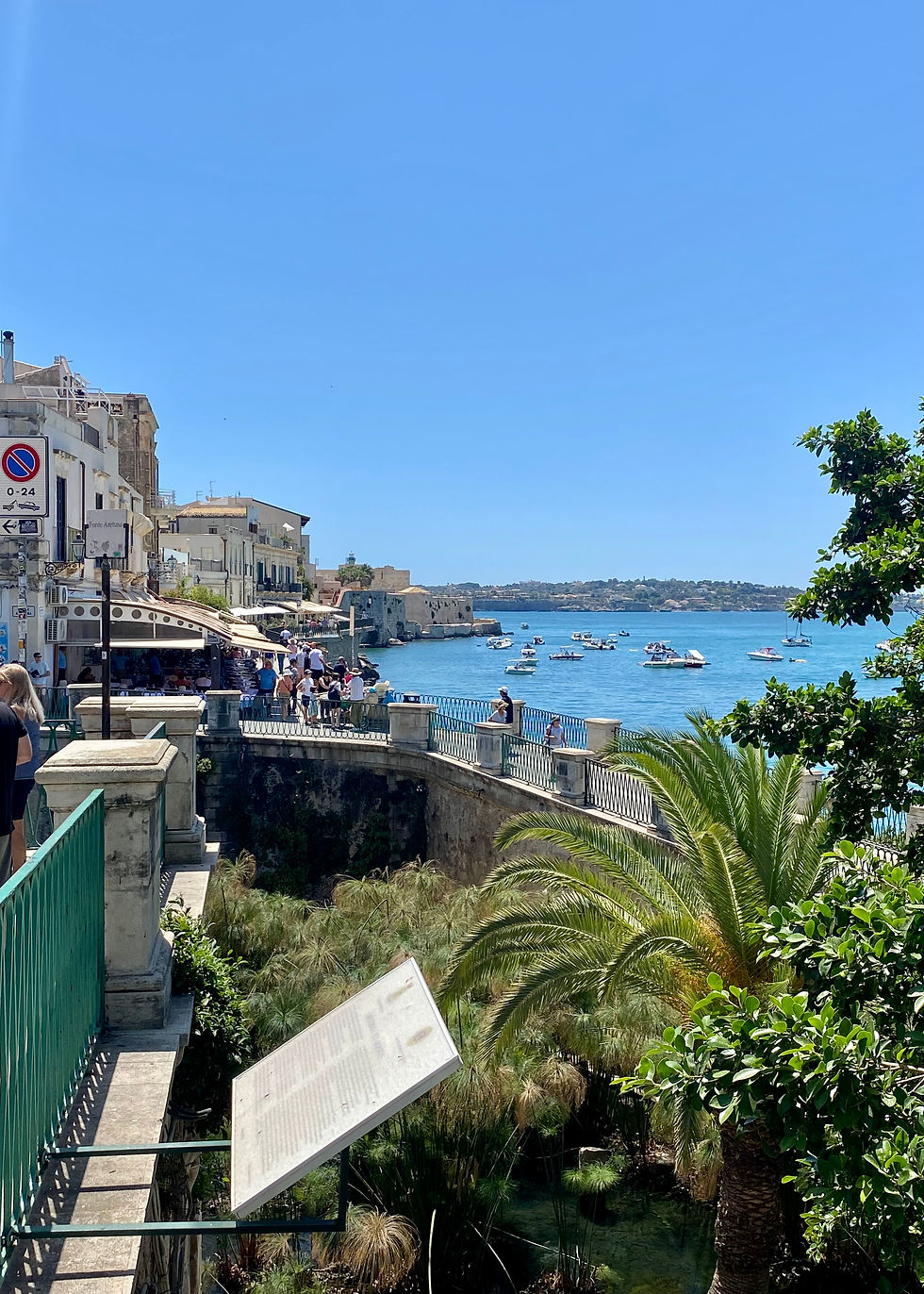
I really like this photo.

Sailing away past the old fort.
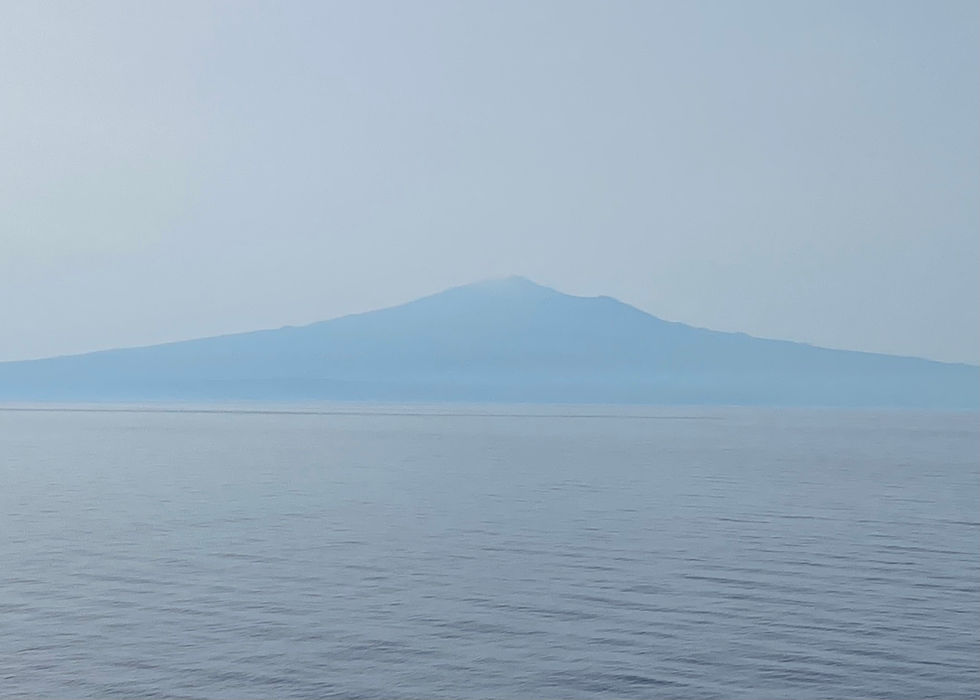
Late afternoon, as we sailed past Mt. Etna.


